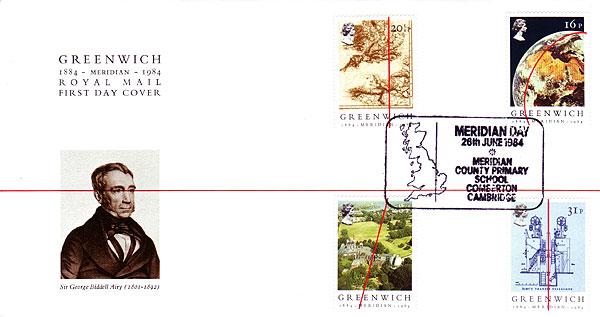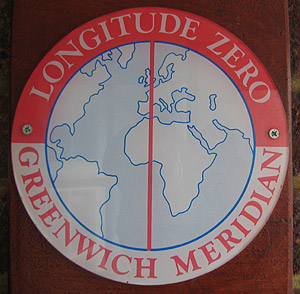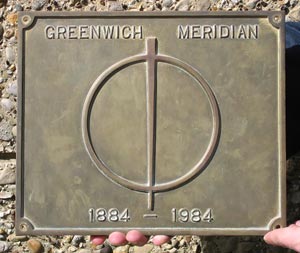The Greenwich Meridian
…where east meets west
Meridian Day – 26 June 1984
In 1984, the National Maritime Museum, of which the Royal Observatory, Greenwich is a part, encouraged people up and down the Line to organise events in order to mark the so-called ‘centenary’ of the Prime Meridian. Although the International Meridian conference took place in October 1884, the Museum designated Tuesday 26 June as ‘Meridian Day’, on the grounds that any outdoor events would be less likely to be affected by the weather. The Museum acted as a coordinating centre for activities and kept interested parties informed of developments though a series of bulletins.

On the day itself, the Royal Mail issued a set of four commemorative stamps and the Red Arrows flew up the Line. At Greenwich, HRH The Duke of Edinburgh and the Astronomer Royal, Arnold Wolfendale, planted a tree on either side of the Line at the Observatory, before joining a crowd of 7,000 children taking part in a wide range of events in the park outside. Neither tree has survived.
 During the year, the Meridian was marked across the UK in a wide variety of ways, from tree planting to the erection of specially commissioned bollards and plaques.
During the year, the Meridian was marked across the UK in a wide variety of ways, from tree planting to the erection of specially commissioned bollards and plaques.
Commemorative six-inch diameter plastic plaques were offered to any individual who could show that the Meridian passed through the curtilage of their property. Potential claimants were required to write to their regional office of the Ordnance Survey to verify their claim and send this as proof of authenticity to the English Tourist Board who were distributing them. No records of how many were issued can be traced. The locations of just four are known, along with the existence of a fifth.
 The National Maritime Museum also arranged for the Enfield Foundry to cast a bronze plaque as a more enduring alternative. At the time, it was stated that they would only be produced if 20 or more orders were received. How many were made is unknown, the Foundry’s records having been destroyed. Only three have been located to date.
The National Maritime Museum also arranged for the Enfield Foundry to cast a bronze plaque as a more enduring alternative. At the time, it was stated that they would only be produced if 20 or more orders were received. How many were made is unknown, the Foundry’s records having been destroyed. Only three have been located to date.